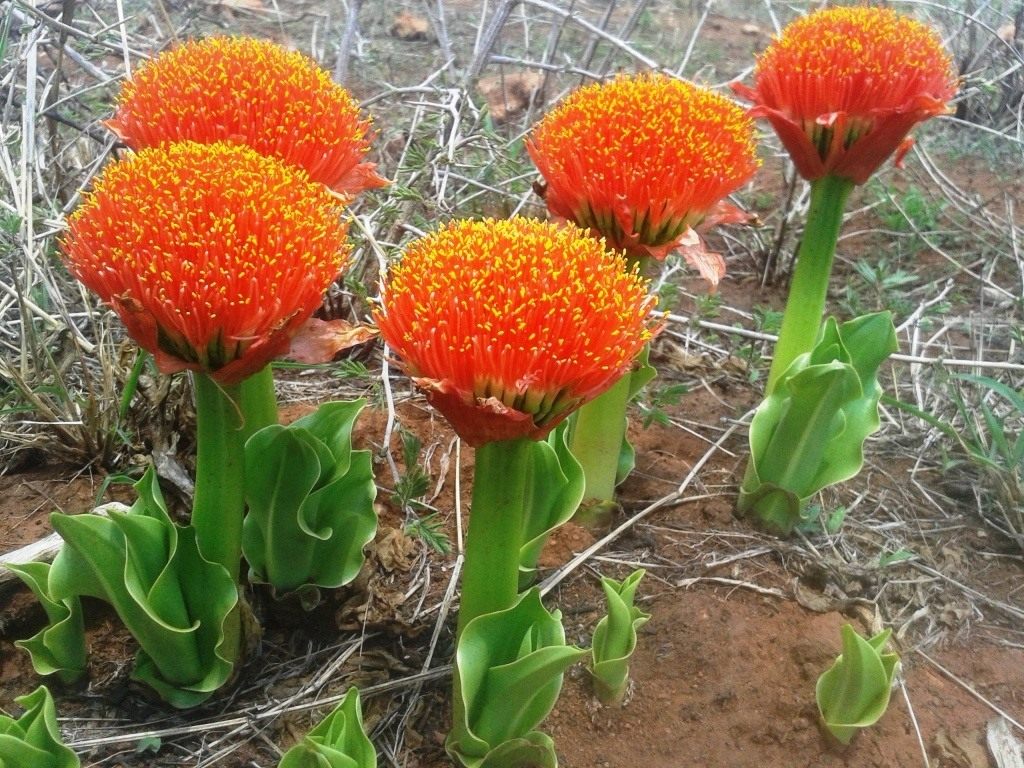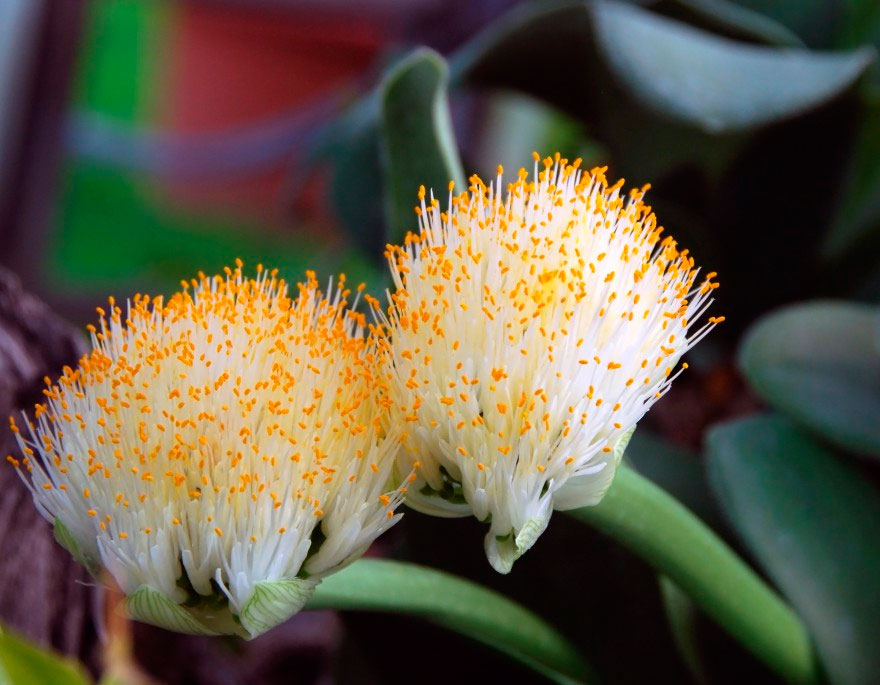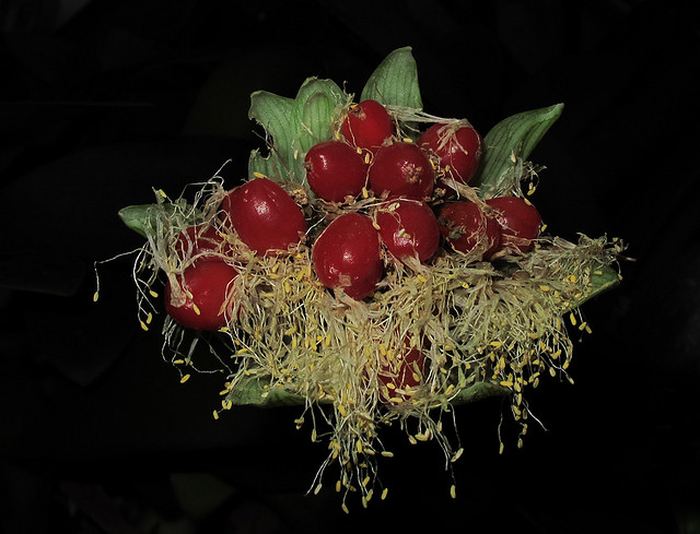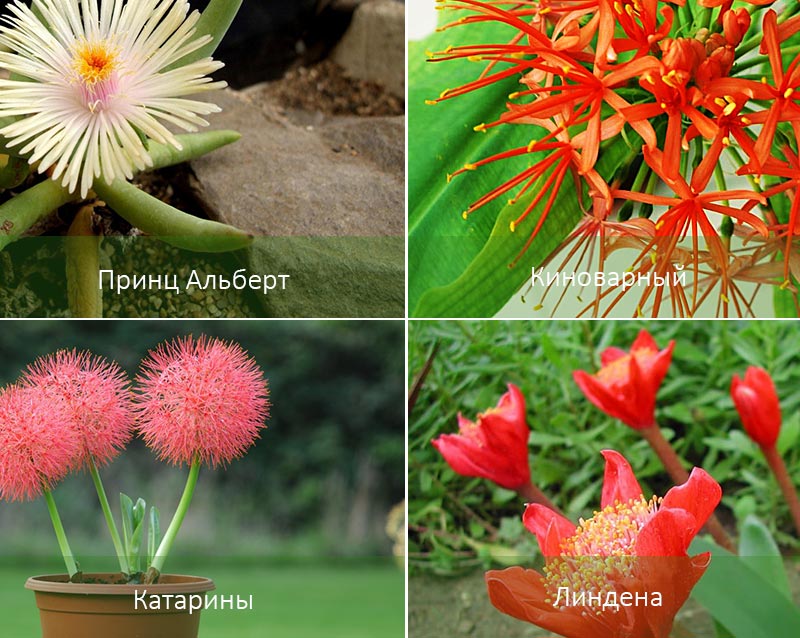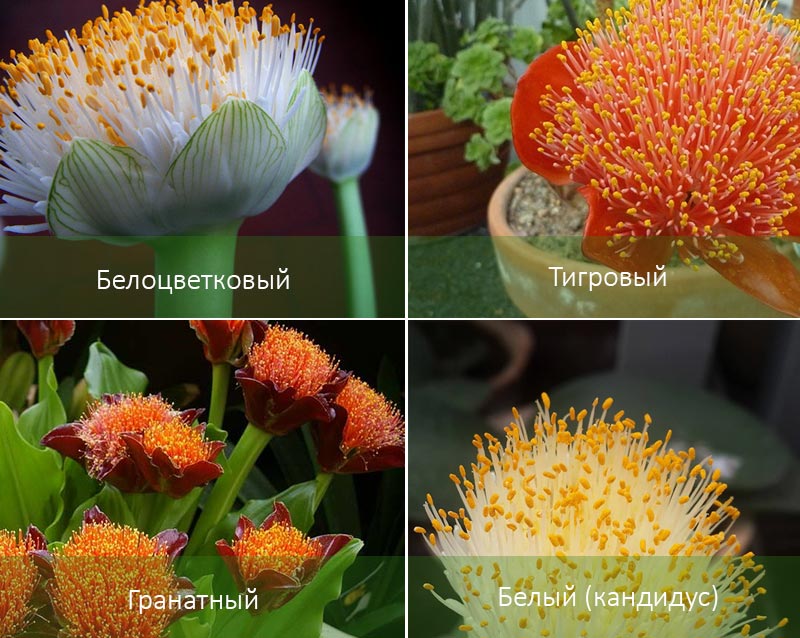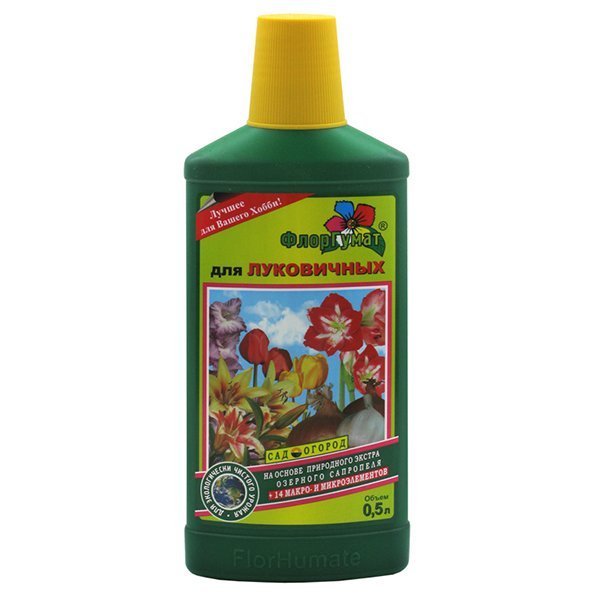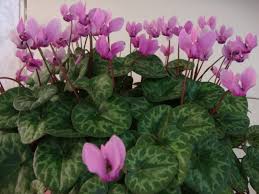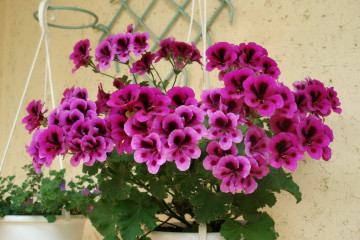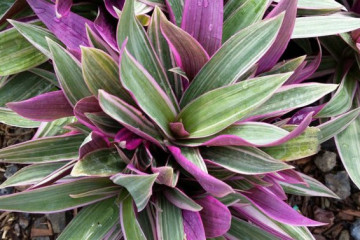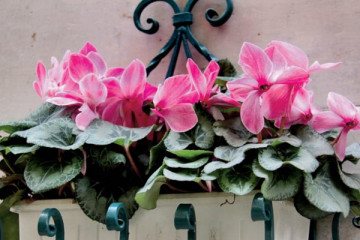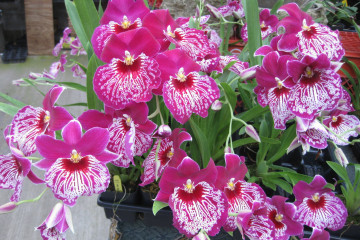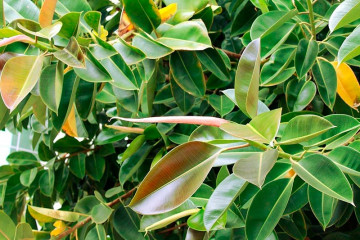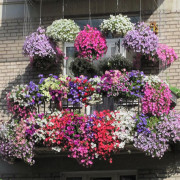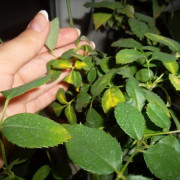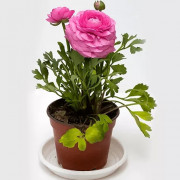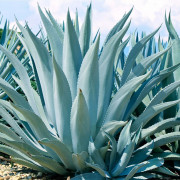Gemantus - home care for a flower
Content:
The culture belongs to the Amaryllis family, which includes more than 40 plant species. The homeland of the natural population of Hemantus is South America.
Brief description of the plant
Gemantus has both evergreen varieties and foliage shedding in winter.
The shape of the plant's bulbs is pear or ovoid, more than 10 cm long. Leaves are smooth, pubescent, sticky, can reach a height of 20 cm together with peduncles. The umbrella inflorescence consists of stamens surrounded by stipules.
Hemantus has a distinctive property - an unpleasant fragrance appears during the formation of pollen and nectar. Hemantus flowers form self-pollinated, red-white berries reach 10-20 mm in diameter.
Varieties of hemantus
The typical species has deep red flowers. House flowers come in different shades.
Hemantus white-flowered (Haemanthus albiflos) is the only evergreen plant from the Amaryllis family. It has popular nicknames "deer tongue", "elephant ear".
Its foliage is dark green in color, dense, with cilia at the edges, up to 10 cm wide, up to 20 cm long.
Dense peduncles are up to 25 cm high, differ in umbrella-shaped inflorescences with golden anther tips. If caring for white-flowered hemantus at home is optimal, the culture blooms in July-August, and the fruits ripen by November-December.
Known varieties of Hemantus:
- A very popular variety of white-flowered hemantus Prince Albert, which has larger bright orange inflorescences.
- Hemantus Linden (Haemanthus lindenii) - has long leaves arranged in 2 rows. The height of the peduncles is up to half a meter, red inflorescences up to 20 cm in diameter.
- Hemantus Katherinae (Haemanthus Katherinae) - hibernates in winter. The false stem of the culture with thin, elongated leaves with wavy edges grows up to 15 cm, red flowers form at the end of summer.
- Hemantus cinnabar (Haemanthus cinnabarinus) - differs in underdeveloped leaves, a high peduncle, crowned with cinnabar-red inflorescences. The culture begins to bloom from April.
- Hemantus snow-white (Haemanthus candidus) - unlike white-flowered, it has pubescence on the back of foliage and flowers.
- Scarlet Hemantus (Haemanthus coccineus) - has foliage with red tips, reaches a height of half a meter. Peduncles are bright red, anthers are yellow. When grown indoors, it blooms in the fall, but not annually, and fades quickly.
- In tiger hemantus (Haemanthus tigrinus), the length of the leaf plates is 45 cm, on them there are brown spots at the base. Large red inflorescences are placed on stems up to 15 cm high.
- Hemantus multiflorus (Haemanthus multiflorus) - has slightly sinewy foliage, inflorescences of scarlet-red and pale pink tones are formed on high peduncles.
- Hemantus pomegranate (Haemanthus puniceus) - has leathery foliage with a wavy edge. Red flowers reach a diameter of 10 cm.
Gemantus - home care
Gemantus is a culture that is easy to care for, like all succulent plants.
Temperature, humidity and watering
Only deciduous varieties of culture have hibernation, so for the winter period from October to February they are placed in conditions with a temperature of + 10 ... +15 degrees, in a not too dark place and with slightly moist soil. From September, they begin to limit watering, removing dried leaves. In February, they are transferred to the light, the soil is renewed, and watering is resumed.
In summer, the location of the plant in the fresh air, in a place where there are no drafts, will be optimal. Favorable temperature - + 18 ... +22 degrees.
The substrate is moistened as its surface dries by 1-2 cm. To water the plant, melt, settled or filtered water at room temperature is needed.
The culture does not need high humidity. The foliage should not be moistened with a spray bottle, but it is necessary to wipe with a damp swab from dust.
Illumination
The flower grows equally well in a slightly darkened place, and in good lighting. East, north-east and west windows are most suitable. If the culture is placed on a south window, shading is necessary.
Top dressing
Fertilization of the flower is carried out every 2-3 weeks; during the rest period, it is not necessary to feed it. Organic and mineral fertilizers with a high content of phosphorus and potassium begin to fertilize the plant during the growing season.
Reproduction methods
The transplant is carried out at intervals of every 2-4 years, from late February to early March. The soil should be composed of turf, leafy earth, sand and humus. It is necessary to deepen the root system into the soil approximately to the middle of the depth.
Reproduction methods
The most convenient way to breed a plant is by children, when the bulbs are separated from the mother bush and planted separately. Only bulbs that have formed their own roots and foliage are subject to separation. With this planting method, flowering begins after 3-5 years.
To grow a culture from a leaf cutting, the lower fleshy leaf is cut off, the cut area is treated with charcoal and left for a day. After drying, the cutting is buried in a mixture of peat and sand, placed in a warm place, and watered moderately. When the plant is rooted, it is transplanted into soil. The flowering of the bush can be achieved in 3-4 years.
Seed propagation must be carried out immediately after collecting the seeds, because the germination period is limited. Seed material is evenly distributed over the surface of slightly moistened soil, without sprinkling it with earth. Cover with glass from above.
Diseases
The plant is resistant to diseases, but such problems are possible:
- The appearance of rot or fungus on the bulbs due to over-watering.
- Staganosporosis (red rot, red burn) in the form of orange-red spots on leaf plates. It is necessary to cut off the affected leaves, sprinkle with a preparation containing copper (Bordeaux liquid, copper sulfate, copper oxychloride), rearrange the bush in a place that is well lit, but without direct sunlight. Water without stagnant water.
Insect pests
The most common flower pests are scale insects, amaryllid insects. It is necessary:
- Soak a cotton pad with alcohol (soap), clean the plant from pests.
- Rinse under a warm shower and dry it.
- Treat the plant with Karbofos.
When small faded dots appear on the foliage, thin cobwebs, dark spots, it is necessary to get rid of the spider mite. For this, acaricidal agents Aktara, Fitoverm, Aktellik are used.
Gemantus does not bloom - what to do
Gemantus is a flower that blooms only in conditions that are as close to natural as possible. The main reasons for the lack of flowering:
- Too poor watering during the growing season.
- For deciduous varieties, poor dormancy organization. They need to be transferred to a cool, lighted place for the winter, having canceled watering.
- Excessive watering. The crop can more easily tolerate a lack of watering than an excess of it.
- Exposure to direct sunlight or insufficient plant lighting.
This unique houseplant will decorate any home with its original shapes and variety of species. It will be pleasant to look after him for any owner, regardless of employment and workload.
